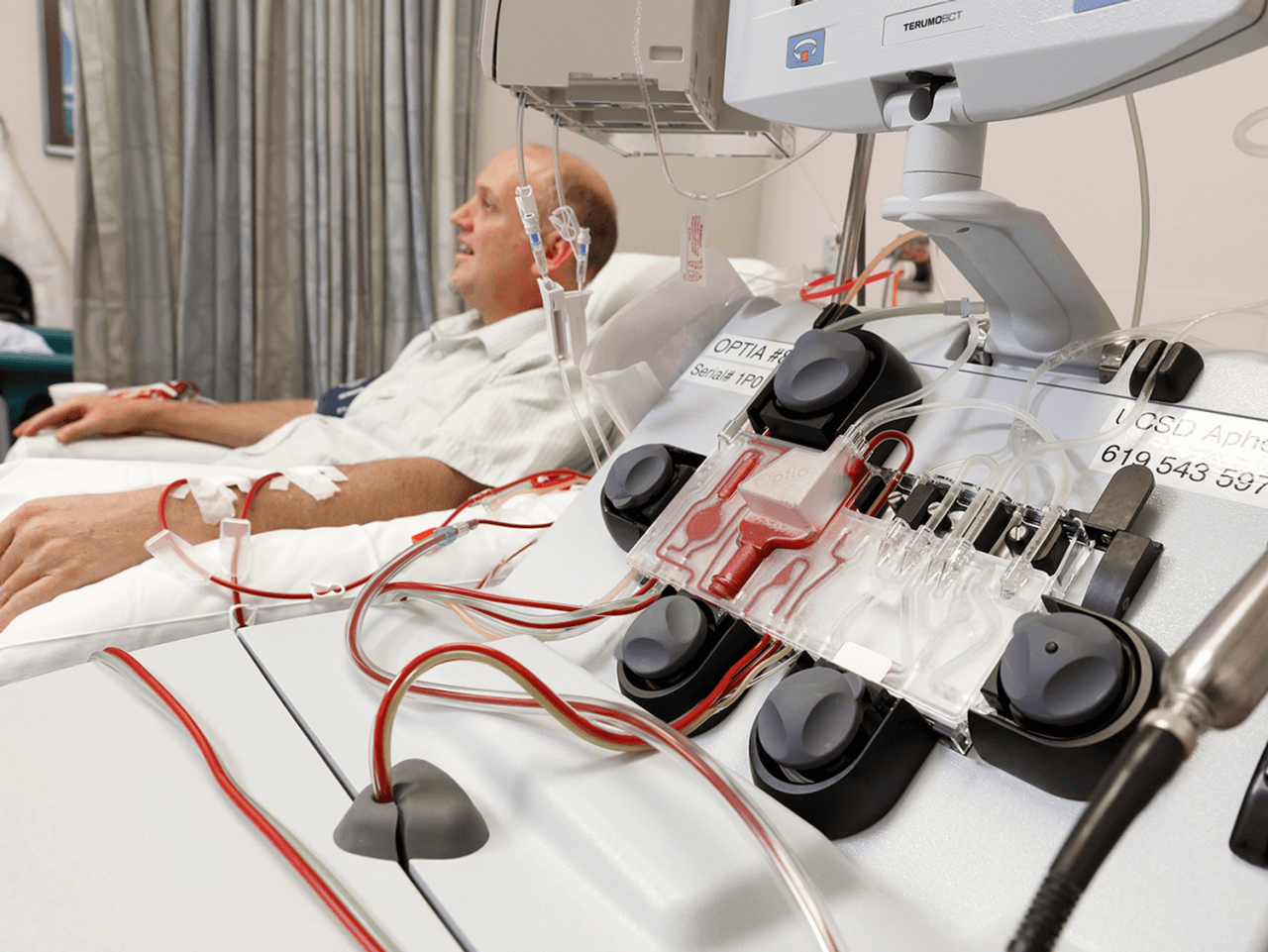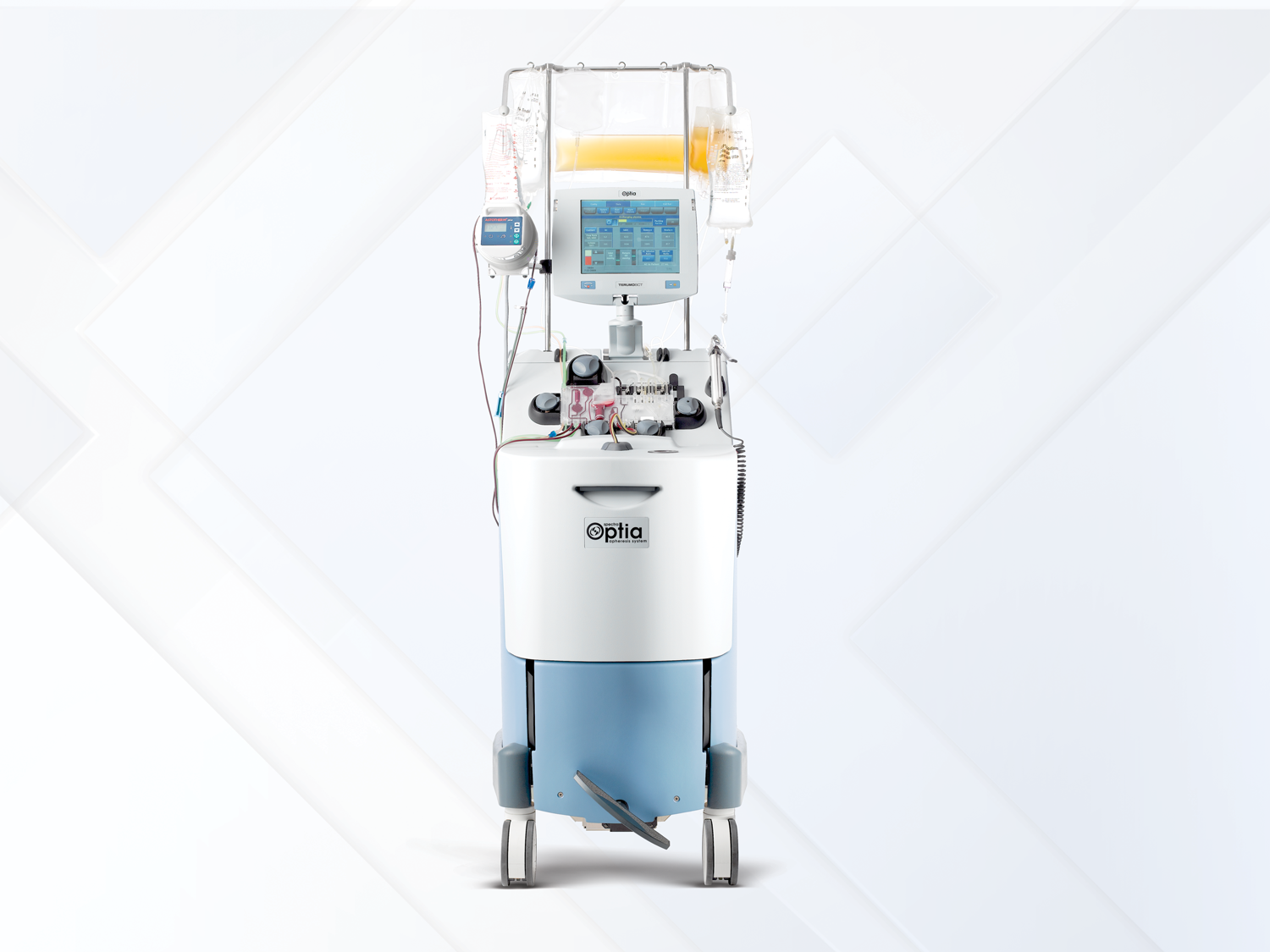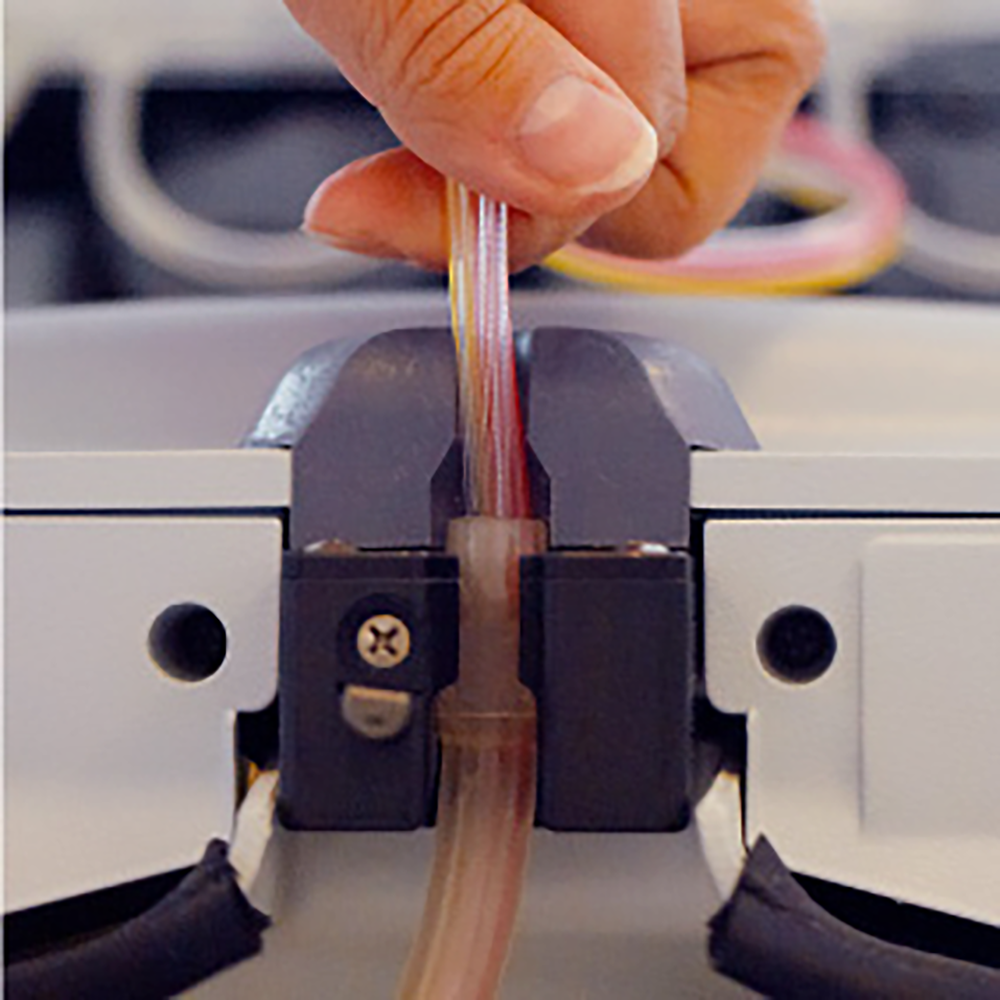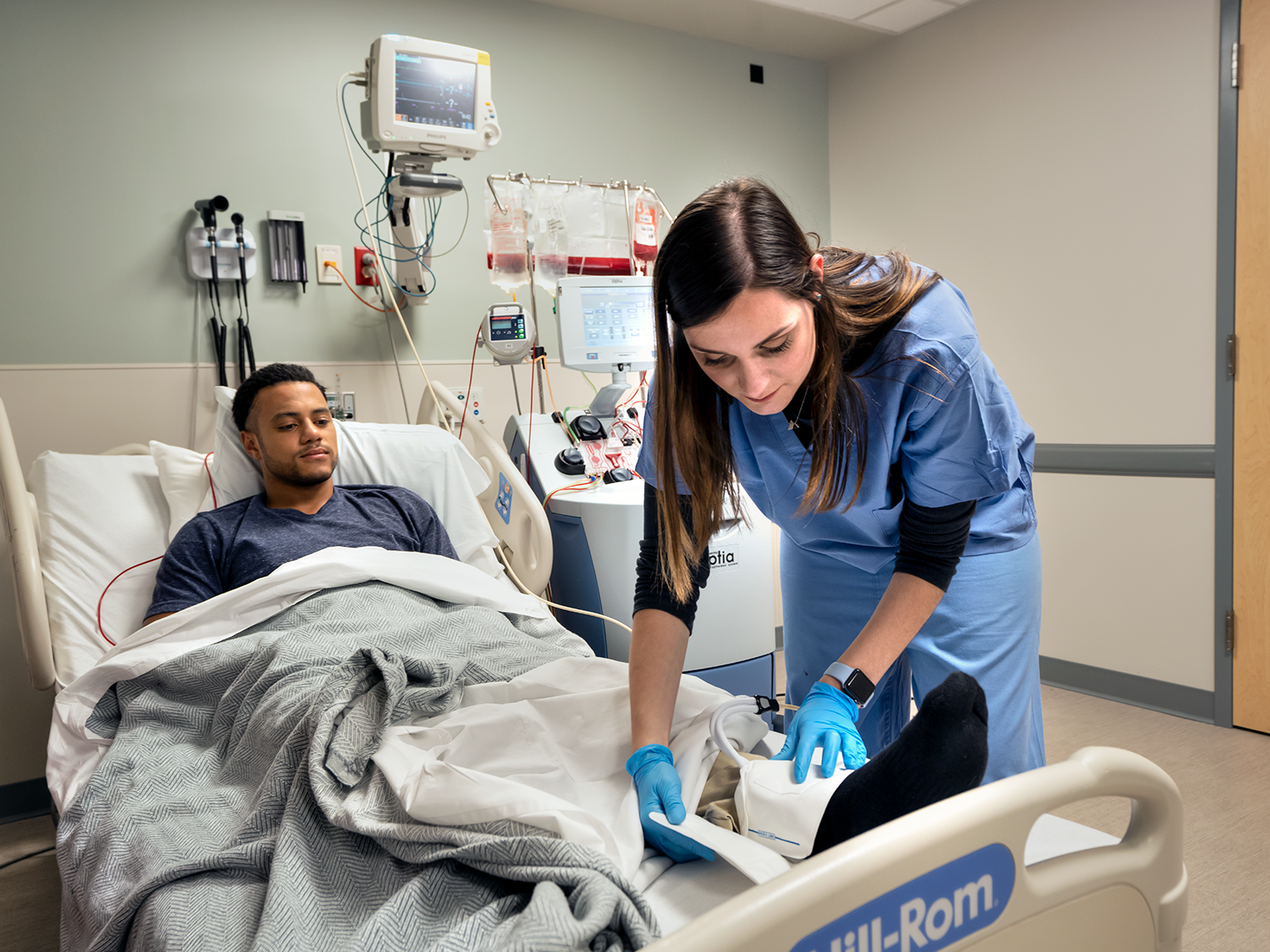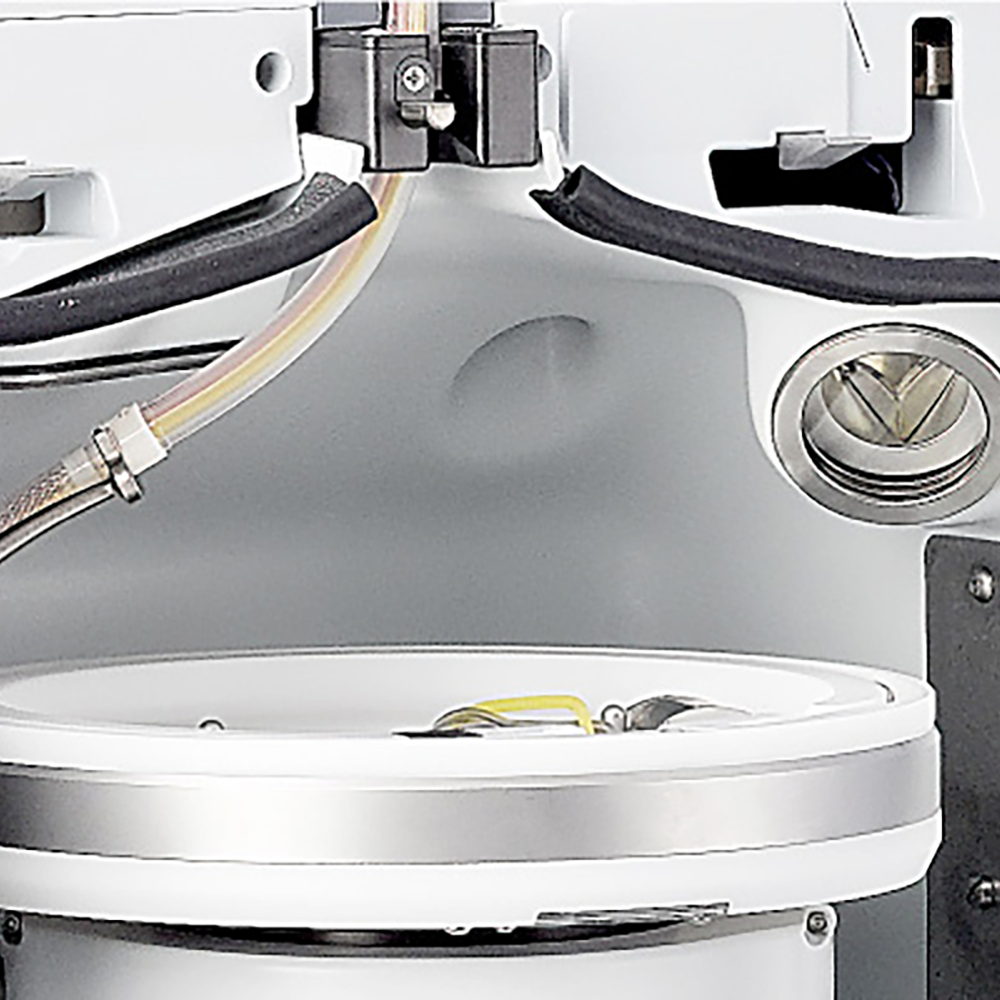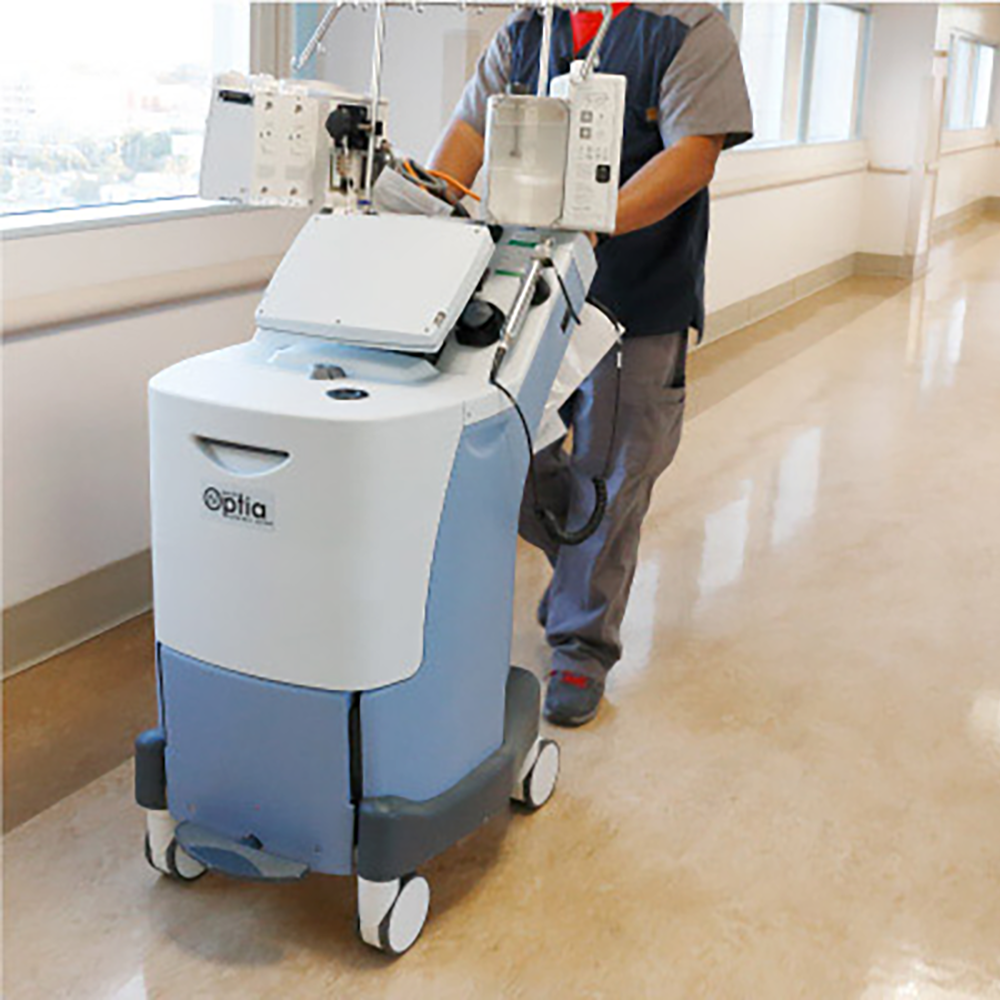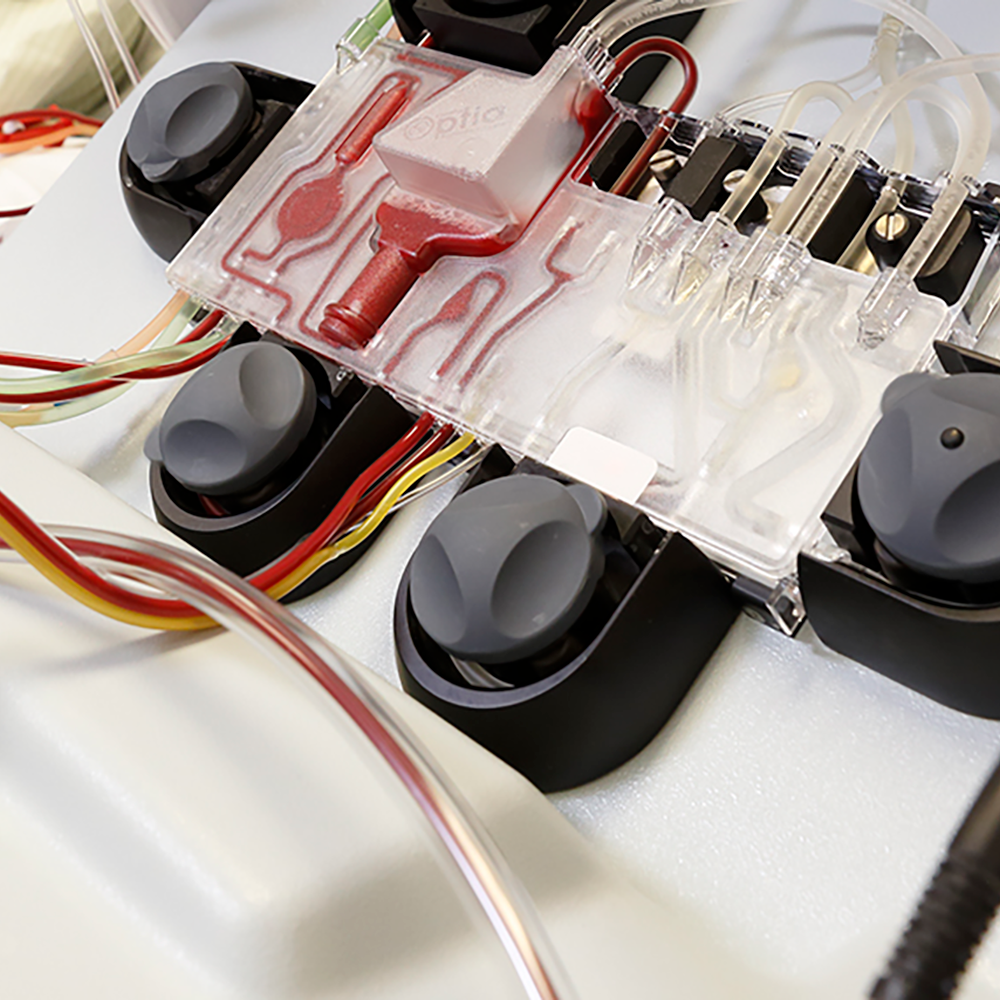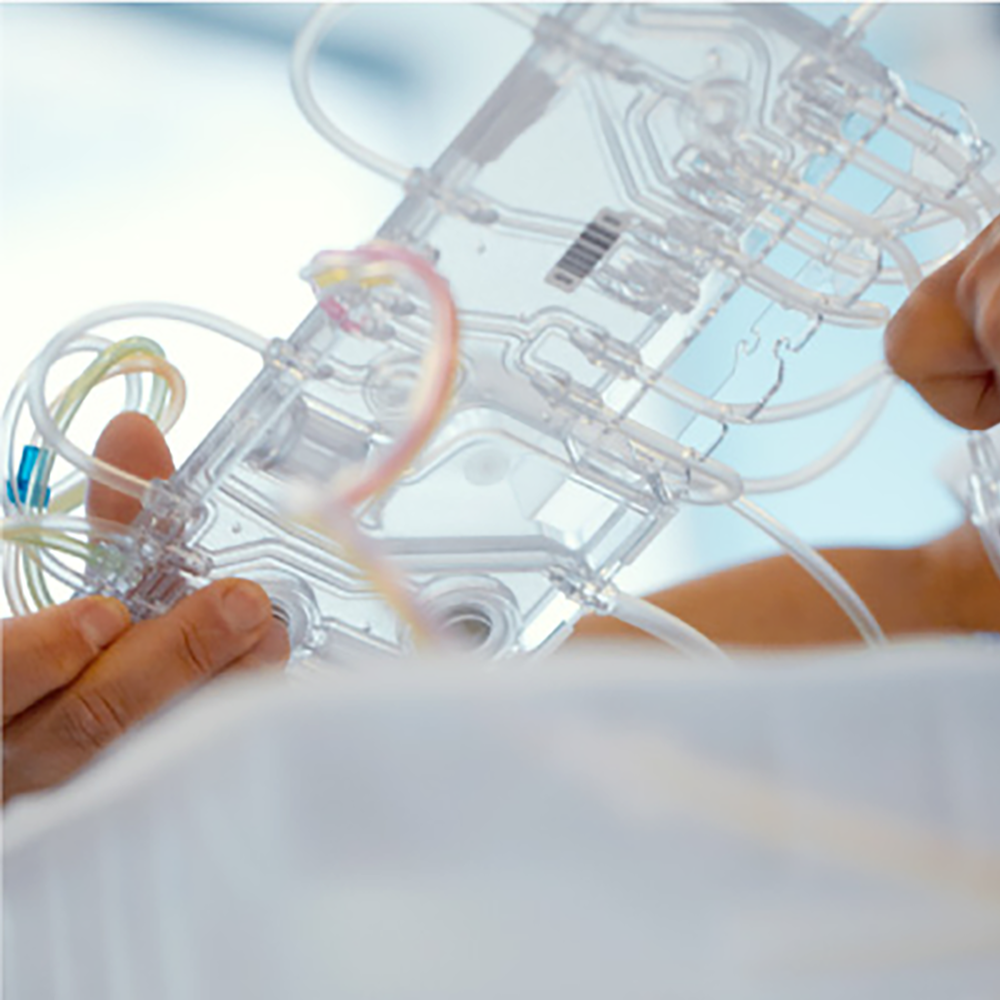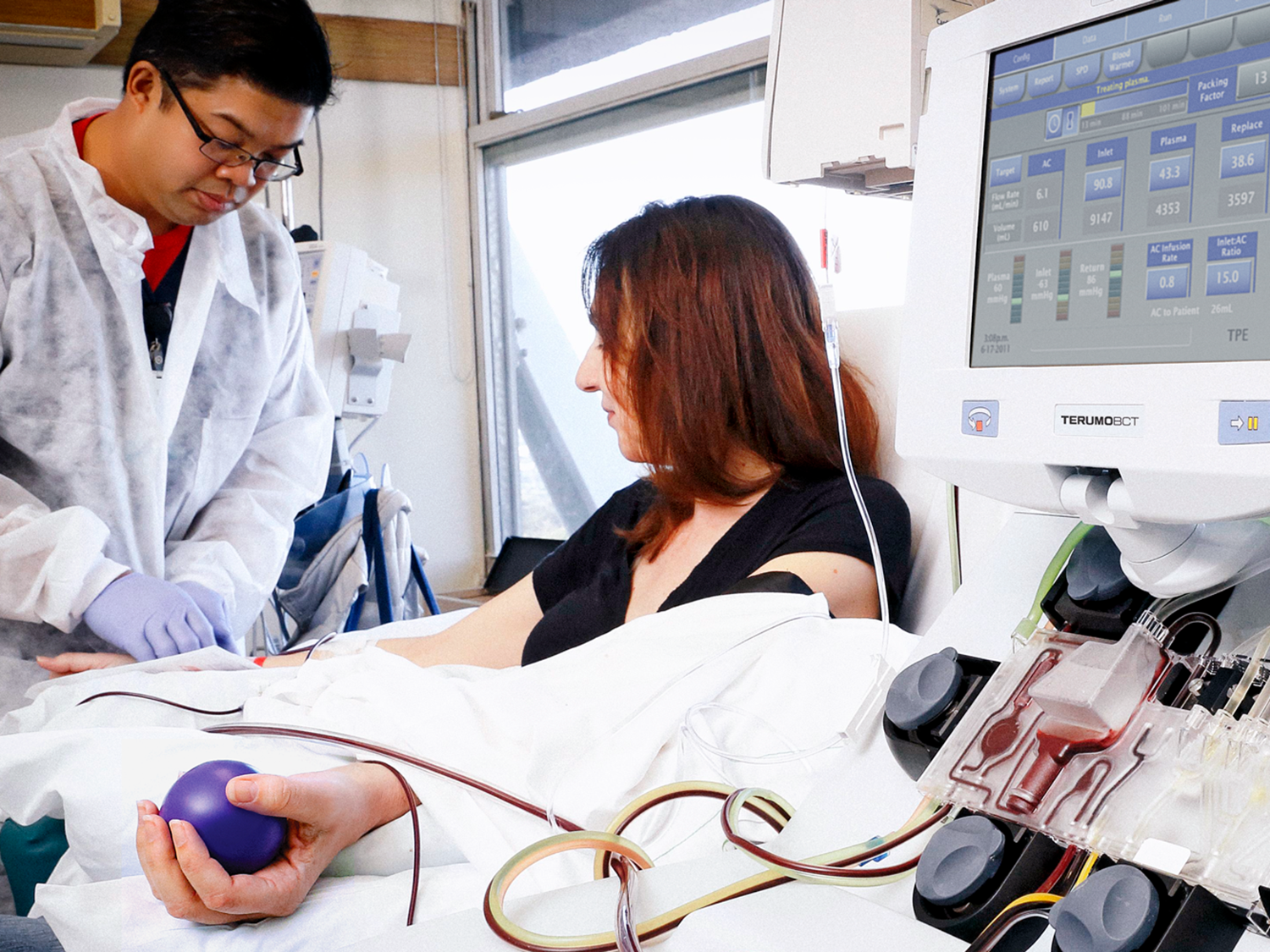先进的治疗性血液成分分离和细胞采集平台
Spectra Optia 系统是一个先进的治疗性血液分离和细胞采集的平台,使操作员可以有更多时间专注于患者护理。这个先进的系统采用连续血流离心和光学探测技术,为操作员提供了在一个平台上就能进行各种类型的血液分离程序。*
系统功能
按类别查看Spectra Optia程序详情
Terumo BCT 为Spectra Optia设备提供一系列程序*,以支持治疗性血液分离和细胞采集需求。请浏览以下协议信息了解详情。如有疑问,请联系我们设备与操作专家。
培训
资料
如需操作手册和使用说明,请访问我们的电子说明书网站:Terumo.eifu.com。欲了解更多信息,请访问:Help.TerumoBCT.com。
想了解更多关于 Spectra Optia 系统的信息吗?
禁忌症
- 除了与所有自动化血液分离系统相关的禁忌证之外,尚不清楚使用本系统会带来哪些禁忌证
- 有些病人可能有输注某些溶液和替换液的禁忌
病人可能出现的反应
- 焦虑、头痛、头晕、手指和/或面部感觉异常、发烧、寒战、血肿、过度换气、恶心和呕吐、晕厥、荨麻疹、低血压和过敏反应
输血反应包括1
- 发烧、循环超负荷、休克、过敏反应、同种异体免疫、移植物抗宿主病和感染传播
仅限处方使用
- 操作员必须熟悉系统的操作说明
- 程序必须由合格的医务人员执行
- 监督医生可以在医院办公室或不属于医院正式部分的其他非医院空间进行监督,但前提是监督医生可以立即赶到现场2
免责声明和注意事项
*产品和协议的供应情况因国家而异。
1. AABB (ed.), et al. Circular of Information for the Use of Human Blood and Blood Components. 10th ed. Seattle, WA: Council of Europe Publishing. 2006.
2. American Society for Apheresis. J Clin Apher.2007;22(3):183.

